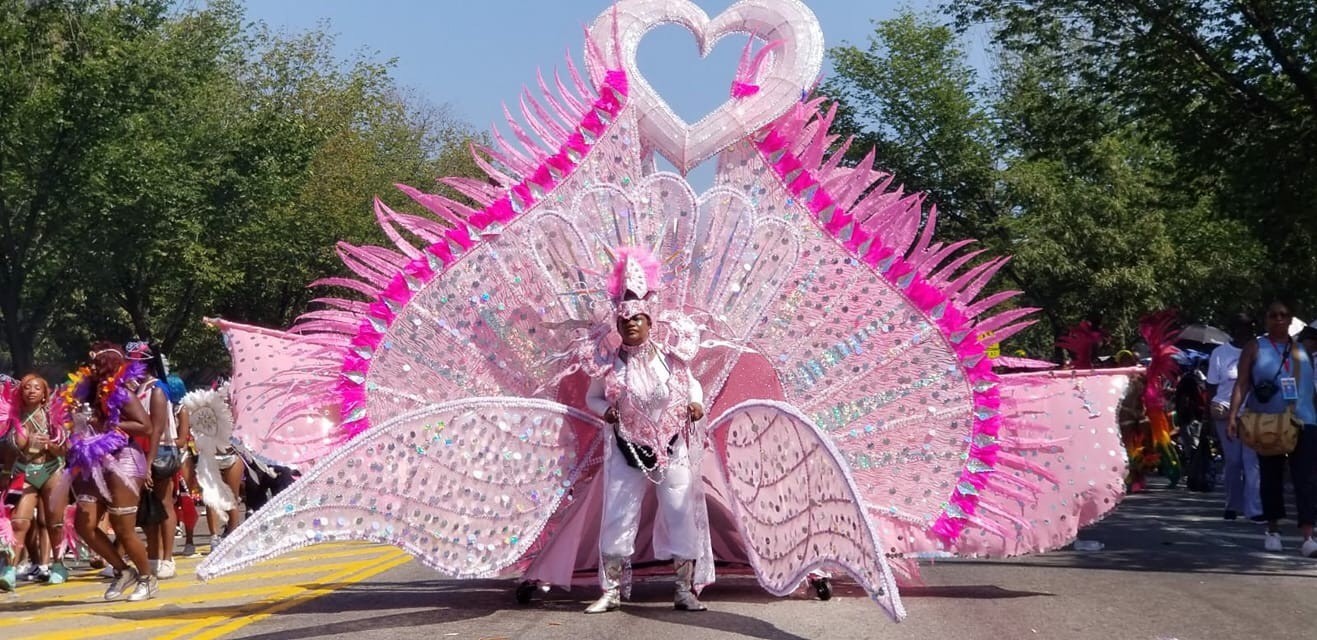Carnival Costumes and Dance
Baltimore, Maryland
Carnival is a traditional festive season that occurs in the weeks leading up to the Lenten season, often culminating on the day before Ash Wednesday, the beginning of the Lenten period. (The word Carnival comes from the Latin for "farewell to meat," as many people mark the Lenten season by abstaining.) Celebrated throughout the transatlantic world, Carnival is perhaps most popular in New Orleans, Brazil, Trinidad and Tobago, and other islands in the Caribbean. It dates back to enslaved people on French plantations in the Caribbean in the 1800s who celebrated “Playing Mas”—or masquerade—as part of a beloved pre-Lenten tradition. Today, in many Caribbean communities, the socially liberating celebration of Carnival is a national obsession, with participants spending the better part of the year in preparation for this multiday celebration.
One of the festival's key traditions involves the making of elaborate, sculptural costumes, constructed out of both natural and manmade materials. While the casual observer might view the costumes, the large steel drum bands, the celebratory street parades, and other Carnival mainstays as simple revelry, these crafts are actually fiercely competitive, as costume makers vie to outperform one another and gain the status of “top costume.”
Carnival costume maker Kenley “Shortmus” John hails from the island of St. Vincent, situated between St. Lucia and Grenada in the Caribbean Sea. After moving to Baltimore, he founded Shortmus Productions, a performing arts group that constructs more than 100 costumes from scratch each year for Caribbean-style carnival celebrations across the country, including the annual CaribeFest in Virginia Beach. "My costumes symbolize the beauty of life in the tropics," says John in an interview with the Baltimore Sun. "My costumes are an expression of ... our cultural heritage. It tells the story of who we are and where we're from."
Another distinct aspect of Carnival celebrations are stilt walkers, sometimes called “Mocko Jumbie” or “Moko Jumbies.” Writer Katherine Brooks explains: “The term ‘moko jumbies’ combines what many have interpreted as a name for an African deity, Moko, and the West Indian word for ‘spirit,’ jumbie. Taken together, the two concepts have amounted to a centuries-old art form consisting of extravagant costumery and gravity-defying dance, in which individuals mime the movements of a towering, protective god.” Baltimorean Shacomba Phipps is a stilt walker whose grandfather brought the tradition from Nigeria to the island of St. Thomas. Phipps and his crew perform on 13-foot stilts, cavorting as spirits who strike fear into the hearts of evil-doers.



